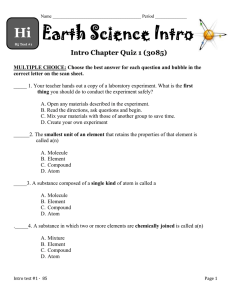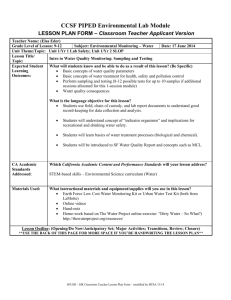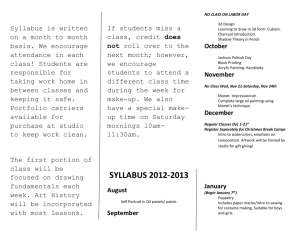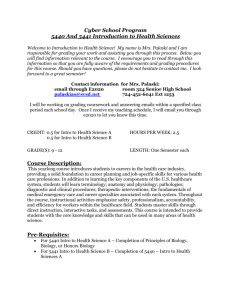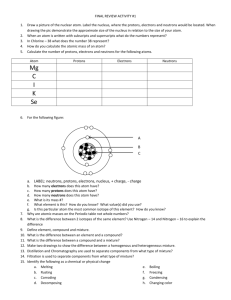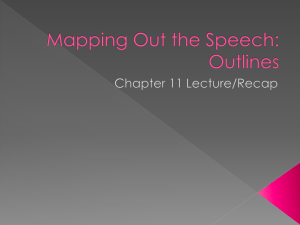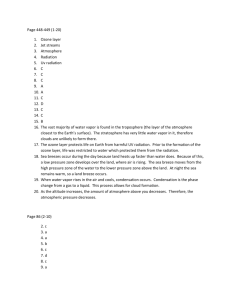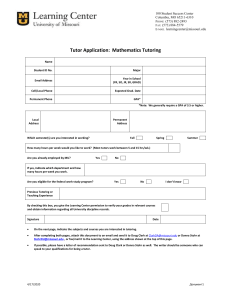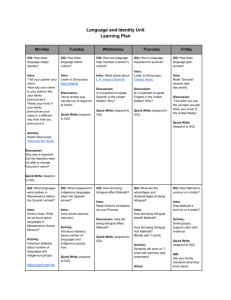NAME PERIOD INTRO TEST #1 STUDY GUIDE (Periods 3 and 8
advertisement
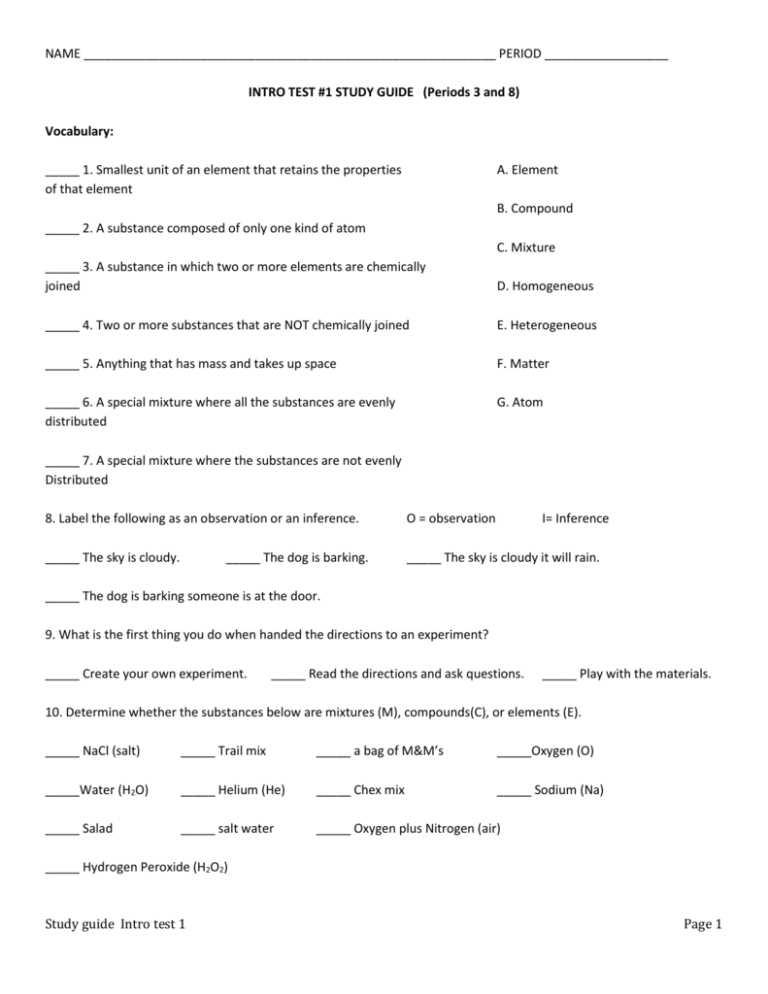
NAME ____________________________________________________________ PERIOD __________________ INTRO TEST #1 STUDY GUIDE (Periods 3 and 8) Vocabulary: _____ 1. Smallest unit of an element that retains the properties of that element A. Element B. Compound _____ 2. A substance composed of only one kind of atom C. Mixture _____ 3. A substance in which two or more elements are chemically joined D. Homogeneous _____ 4. Two or more substances that are NOT chemically joined E. Heterogeneous _____ 5. Anything that has mass and takes up space F. Matter _____ 6. A special mixture where all the substances are evenly distributed G. Atom _____ 7. A special mixture where the substances are not evenly Distributed 8. Label the following as an observation or an inference. O = observation _____ The sky is cloudy. _____ The sky is cloudy it will rain. _____ The dog is barking. I= Inference _____ The dog is barking someone is at the door. 9. What is the first thing you do when handed the directions to an experiment? _____ Create your own experiment. _____ Read the directions and ask questions. _____ Play with the materials. 10. Determine whether the substances below are mixtures (M), compounds(C), or elements (E). _____ NaCl (salt) _____ Trail mix _____ a bag of M&M’s _____Oxygen (O) _____Water (H2O) _____ Helium (He) _____ Chex mix _____ Sodium (Na) _____ Salad _____ salt water _____ Oxygen plus Nitrogen (air) _____ Hydrogen Peroxide (H2O2) Study guide Intro test 1 Page 1 11. The center of an atom is called the _________________________________________. 12. What are the two subatomic particles in the center of the atom? _____________________ ___________________ Using the Periodic Table below answer questions 13 – . If you cannot read this table because it is too small, use the Periodic Table in your packet. 13. Which element has 3 protons, 3 electrons and 4 neutrons? _______________________ 14. How many protons does Potassium (K) have? __________________________________ 15. How many electrons does Iron (Fe) have? _____________________________________ 16. How many neutrons does Aluminum (Al) have? _________________________________ Study guide Intro test 1 Page 2 Vocabulary: 17. _____ Basic unit of length A. Graduated cylinder 18. _____ Amount of space an object takes up B. Metric ruler 19. _____ Basic unit for volume C. Meniscus 20. _____ Basic unit for mass D. Balance 21._____ instrument used to measure liquid volume E. Meter 22. _____ The curve of a liquid F. Volume 23. _____ Instrument used to measure length G. Liter 24._____ Instrument used to measure mass H. Gram 25. What is the charge for each of the subatomic particles? _____________________ proton _____________________ neutron _____________________ electron 26. In what part of the atom are protons and neutrons found? ________________________________ 27. Are the five mixtures below heterogeneous or homogeneous? Label the pictures with the correct name. A.__________________________________ B.__________________________________ Study guide Intro test 1 Page 3 C.__________________________________ D.__________________________________ E.__________________________________ 28. Study the pictures below and record the measurement and unit for each. A._____________ Study guide Intro test 1 B.___________________ Page 4 C.__________________ D.________________ E._____________________ Study guide Intro test 1 Page 5 F._________________________ A. _________________________ E. ________________________ B. _________________________ F. ________________________ C. _________________________ G. ________________________ D. _________________________ Study guide Intro test 1 Page 6 29. Using water displacement find the volume of the object. Volume of little man is ______________________________________. Volume of the rock is _______________________. Study guide Intro test 1 Page 7 30. Find the volume of the regularly shaped objects below. Volume of the rectangle is _____________________________. Volume of the square is ____________________________. Study guide Intro test 1 Page 8
